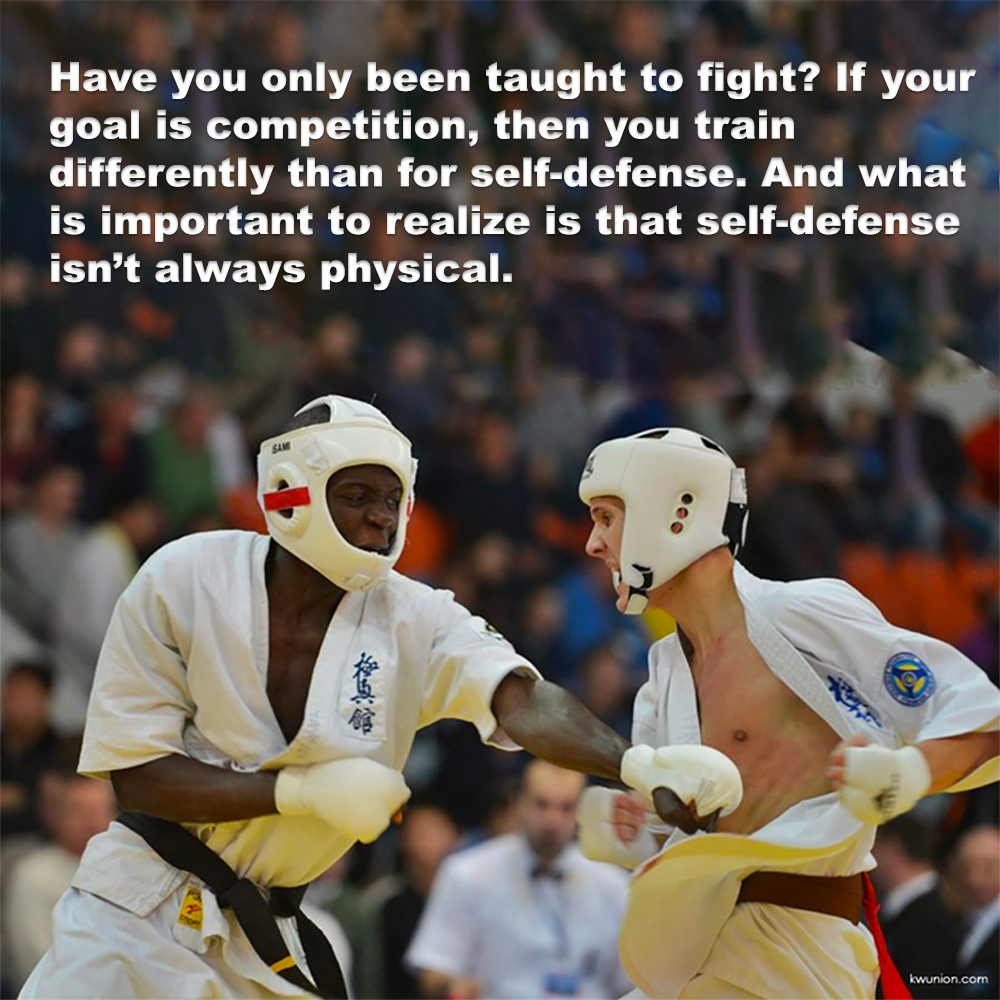
It’s incredibly interesting to me how rules determine the efficacy of certain styles of fighting, we can also see rulesets for competition change a martial art entirely. Its one of the reasons why its actually difficult to determine which style of martial art is objectively better (people constantly argue their system is the best).
.
Because of the environment each separate martial art is developed in, they tend to be the most effective strategy for that environment….. It’s obvious isn’t it?
.
Practitioners need to understand situation and context matters in any “kind of fighting”. What works in a cage fight, is different from a kick-boxing match, is different from Jiu-Jitsu fight, is different from full-contact fighting. What works in a sports ring with rules, may not translate well into self-defense. Things that happen in a threatening scenario can simply be two people arguing, and/or getting into a mutual brawl… or a survival based self-defense situation, involving an attacker and a victim, perhaps with hidden weapons. All very different situations.
.
Whether it is point karate, MMA, or full-contact, or knockdown, “their” system translates best to self-defense, is simply not true…… I still get so many comments from people that just don’t get it.
.
Every style is limited to the same anatomical movements. The only difference is in the method of training…… And context is king. It determines which tools you should use.
.
Have you only been taught to fight? If your goal is competition, then you train differently than for self-defense. And what is important to realize is that self-defense isn’t always physical. I seem to have to explain this to people ad-nauseam.
.
If you have only been taught to fight first, it will be you that could fall foul of the law. Self-defense can simply be an act or instance of defending, or protecting your own interests, property, etc., by argument or strategy, or by simply removing yourself from the altercation.
.
Self-defense contains preventive measures and reactive measures. Both are critical and they are chronologically separated, with prevention coming first and reaction following, if necessary.
.
Physically engaging a violent person is a reactive last resort, and your last resort (no matter how important) should not be your first and only resort.
.
If your goal is to win, any kind of match, then you train differently than if you want to learn how to protect yourself, or others, in any kind of self-defense situation….. It’s logical isn’t it?
.
Within the martial arts of any kind, everyone is taught to fight, again obvious, but many practitioners will often site that their style or system is the best for self-defense because of….. (insert technique[s] or style here). However, self-defense, or self-protection, the term I prefer, is very different than just “fighting”.
.
You have to determine your goal first and then pick your tools. Regardless of how good other tools are for other goals, if they don’t help you for that particular scenario, then maybe it’s not the best match. I believe the same is true for all fighting arts: determine first and foremost why you train and then pick the system(s) that helps you achieve that goal.
.
Discussions and arguments about which martial art is most effective are insanely common. I get numerous comments from people telling me how successful they are in competition. The point that many people miss however, is that effectiveness can only be measured in relation to defined goals. You have to define what it is you’re trying to achieve before reaching a conclusion about the best way to get there. If you want to talk about effectiveness, you’ll have to first decide what it should be effective for.
Of course, there are cross-overs techniques and principles in any martial art, but one of the failings when it comes to “fighting” being confused with “self-protection”, is to be an able “fighter” takes lots of work, and the physical should always be the last resort. However, if all that is taught is the physical, then it’s not going to work for the majority of people (who don’t train enough or have the natural attributes). There is always a problem when differing terms mean different things to different people.
.
If self-protection training focuses on developing a healthy attitude to personal safety, personal security, threat awareness, threat avoidance, de-escalation, etc., then most people will be able to make that work and, regardless of how good a fighter you may be, it’s that content that should be given priority for both practical and legal reasons.
.
Think things through, with logic, common sense, and forget your pride and ego. Just because you are an awesome tournament fighter, perhaps doesn’t make you the best person to be a “preventative” practitioner. So understand the differences, do your own research so you can at the very least be comfortable with your choice….. After all, it’s your butt on the line.
.
.
With thanks to Iain Abernethy
.
